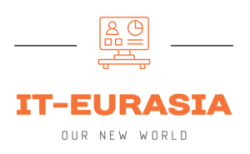“New beginnings are often disguised as painful endings” – Lao Tze
The emerging Eurasian economic area is increasingly developing its domestic markets in all business segments, as well as financial instruments that facilitate trading in local currencies.
The space that we call Eurasia, in the economic and political sense, is just now being formed. We are definitely talking about all countries directly or indirectly involved in the SCO (Shanghai Security Organization) and the BRICS+ zone of influence. To designate geographical boundaries, this region should include Russia, the CIS countries, China, India, Iran, the Middle East and almost all countries of South Asia. Africa is also linked to this region, where China, Russia and Iran are now very active politically and commercially, increasing their influence.
Western Europe is geographically part of Eurasia, but is currently isolated from the rest of the mainland for political reasons. One can hope that these reasons are temporary, but so far they are working: Europe today does not even think about overcoming its information and technological dependence on the United States.
If we talk about the IT market, then the Eurasian countries are at an early stage of cooperation, this especially applies to relations between Russia and the rest of Eurasia. The Russian IT market, like the EU market, and until the beginning of 2022 was very dependent on American technologies and suppliers – even taking into account the fact that starting from 2015, a movement towards more independence began, lead by domestic software and hardware manufacturers, primarily serving the state sector.
After the Western vendors left, the Russian IT market is recovering from the initial shock and reorganizing to meet new challenges. It is still unclear whether the market structure copied from the West (“end consumer – integrator – distributor – supplier”) will continue, or whether we will develop in the direction of the Chinese or Iranian model.
You should be prepared for further shocks, for example, if political tensions around Taiwan escalate and the US decides to impose sanctions on Chinese IT businesses.
In the long term, the IT sector in Eurasia will see an evolution of the entire ecosystem. The meaning of this evolution is to achieve true independence from Western technologies. The most advanced countries, including Russia, will play a key role in this.
In the short term, we must combine all available forces and expertise within Eurasia to continue working and developing the IT and telecommunications infrastructure, using all available technologies and skills, with increasing cooperation between countries and companies.

